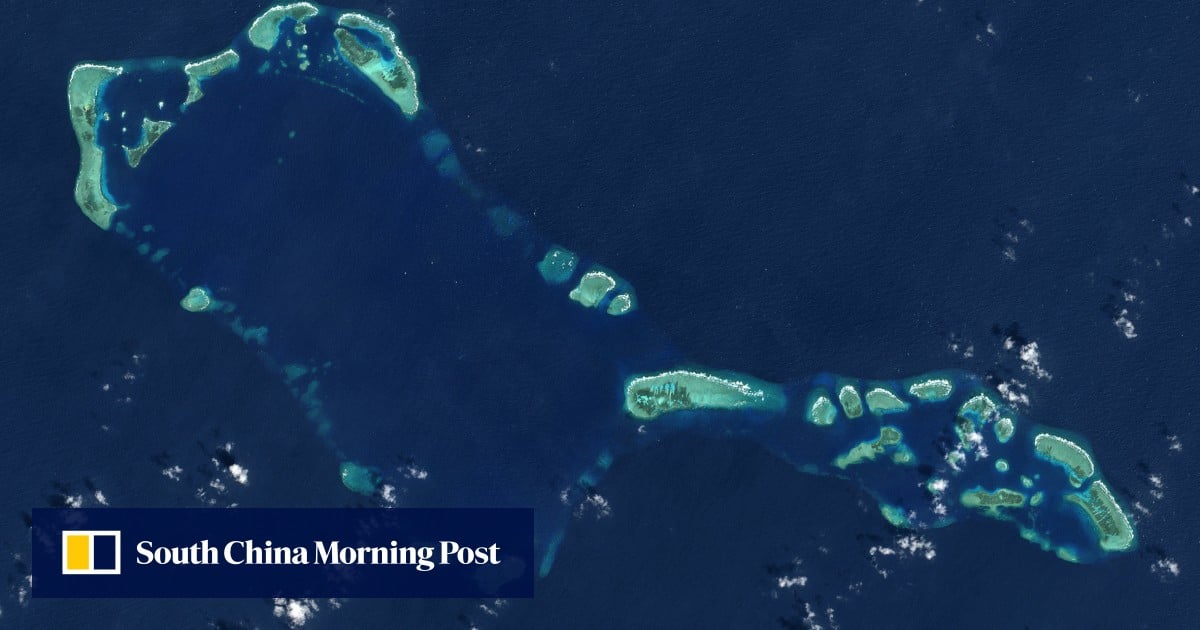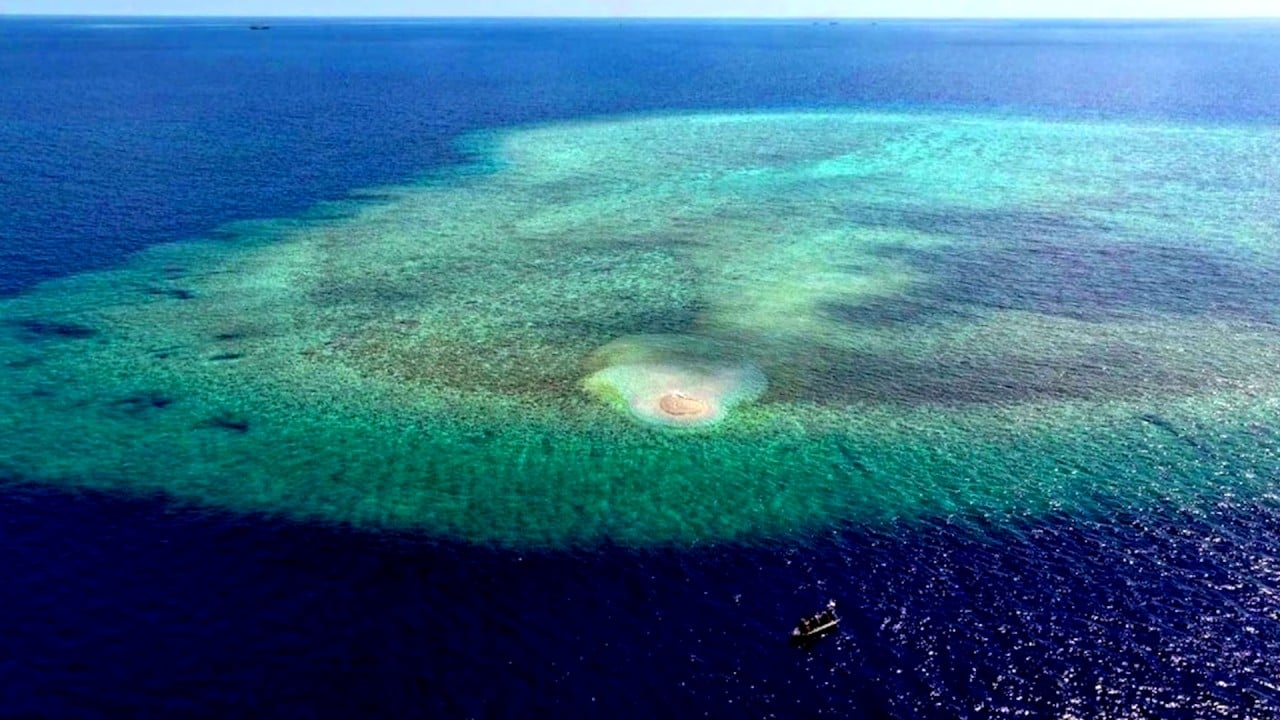The Philippines has bolstered its presence in the South China Sea by deploying a navy warship to assert its sovereignty and counter alleged Chinese reclamation activities, while it shores up surveillance capabilities with a space technology partnership with the United States.
The efforts by Manila reflect a multipronged strategy to address escalating tensions in the disputed waters, analysts say.
Commodore Roy Vincent Trinidad, Philippine Navy spokesman for the West Philippine Sea, on Tuesday confirmed the deployment of a warship to the Sabina Shoal, a maritime feature in the West Philippine Sea located 75 nautical miles (120km) off the coast of the Philippine island of Palawan.
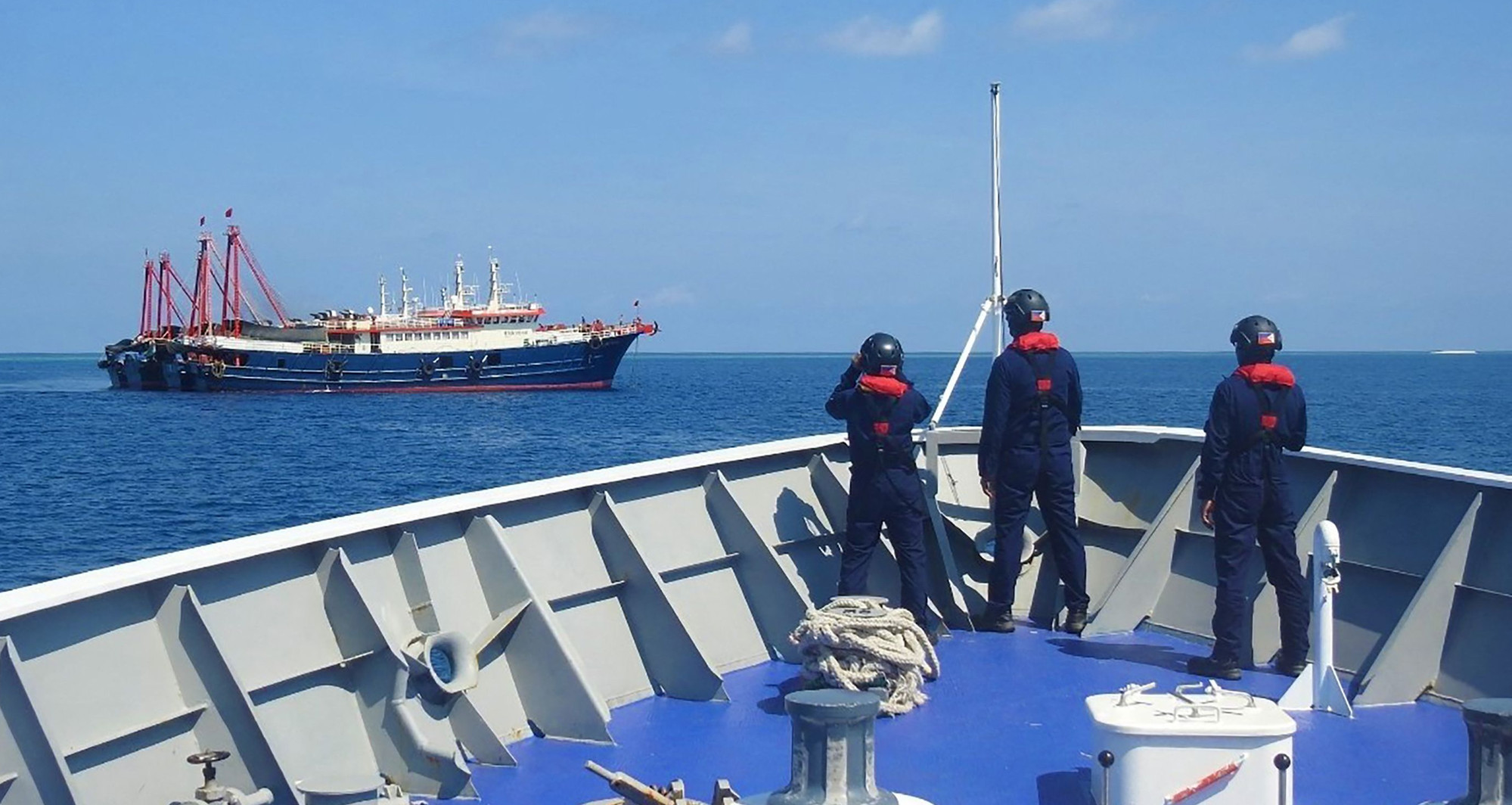
“The navy has increased its patrols in Sabina Shoal. For the past good number of days, we have had one warship stationed in the area. This is to ensure that whoever is doing that, whoever is piling up dead corals in Sabina Shoal, we will be able to expose their activities,” Trinidad told ABS-CBN News.
The West Philippine Sea is Manila’s term for the section of the South China Sea that defines its maritime territory and includes its exclusive economic zone (EEZ).
“We will do everything to ensure that Sabina and all other features within our EEZ will remain under Philippine sovereignty and sovereign rights,” Trinidad said.
Chinese Foreign Ministry spokesman Wang Wenbin denied the accusations on Tuesday, saying claims of “China’s reclamation” were rumours spread by the Philippines designed to vilify China and mislead the international community.
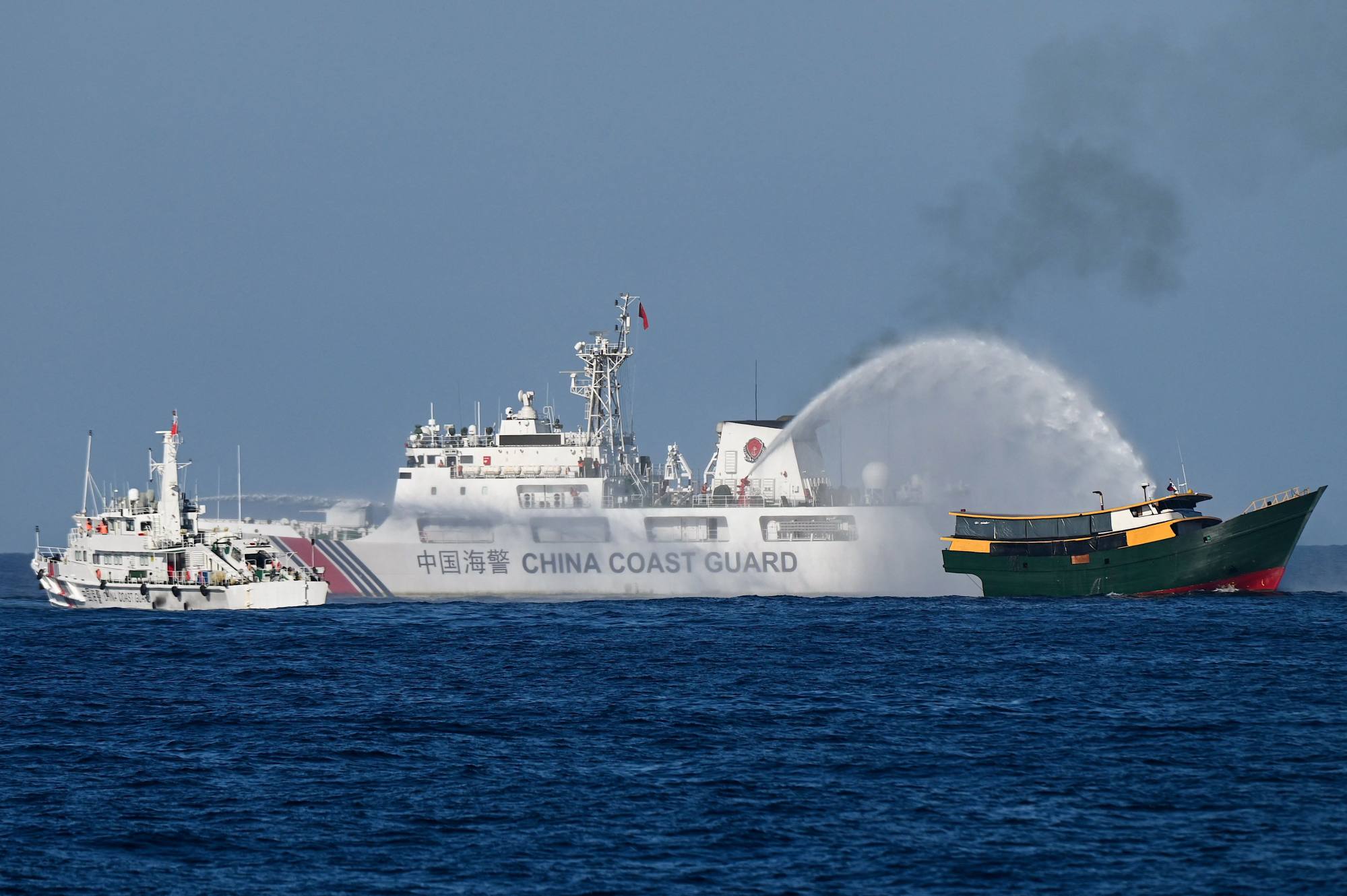
In a separate interview on Tuesday with One News PH, Trinidad said China’s recent aggressive activities in the West Philippine Sea, including its vessels’ use of water cannons to disrupt the activities of the Philippine Coast Guard, were attempts to bait Manila into starting an open conflict.
“It’s a new face of aggression in terms of the actions that are now more geared towards imposing their will. This time their water cannons are very strong. It’s an escalation of previous actions by them, but it is not yet at the threshold of conflict,” he said.
“They would like to win without fighting. But more importantly, without the adversary fighting back against them. So they will do everything which is not in the book, except firing the first shot … making you commit the first mistake.”
Political analyst Sherwin Ona, an associate professor of political science at De La Salle University in Manila, told This Week in Asia the warship deployment indicated the navy would now be augmenting “the limited resources of the Philippine Coast Guard” that had largely been in charge of patrolling and monitoring the disputed waters.
Jose Antonio Custodio, a defence analyst and a fellow at the Consortium of Indo-Pacific Researchers, said involving the navy in patrols around the West Philippine Sea signalled that Manila was preparing for potential escalation.
“If so needed, the Philippine navy can respond quickly to any developing situation,” Custodio told This Week in Asia.
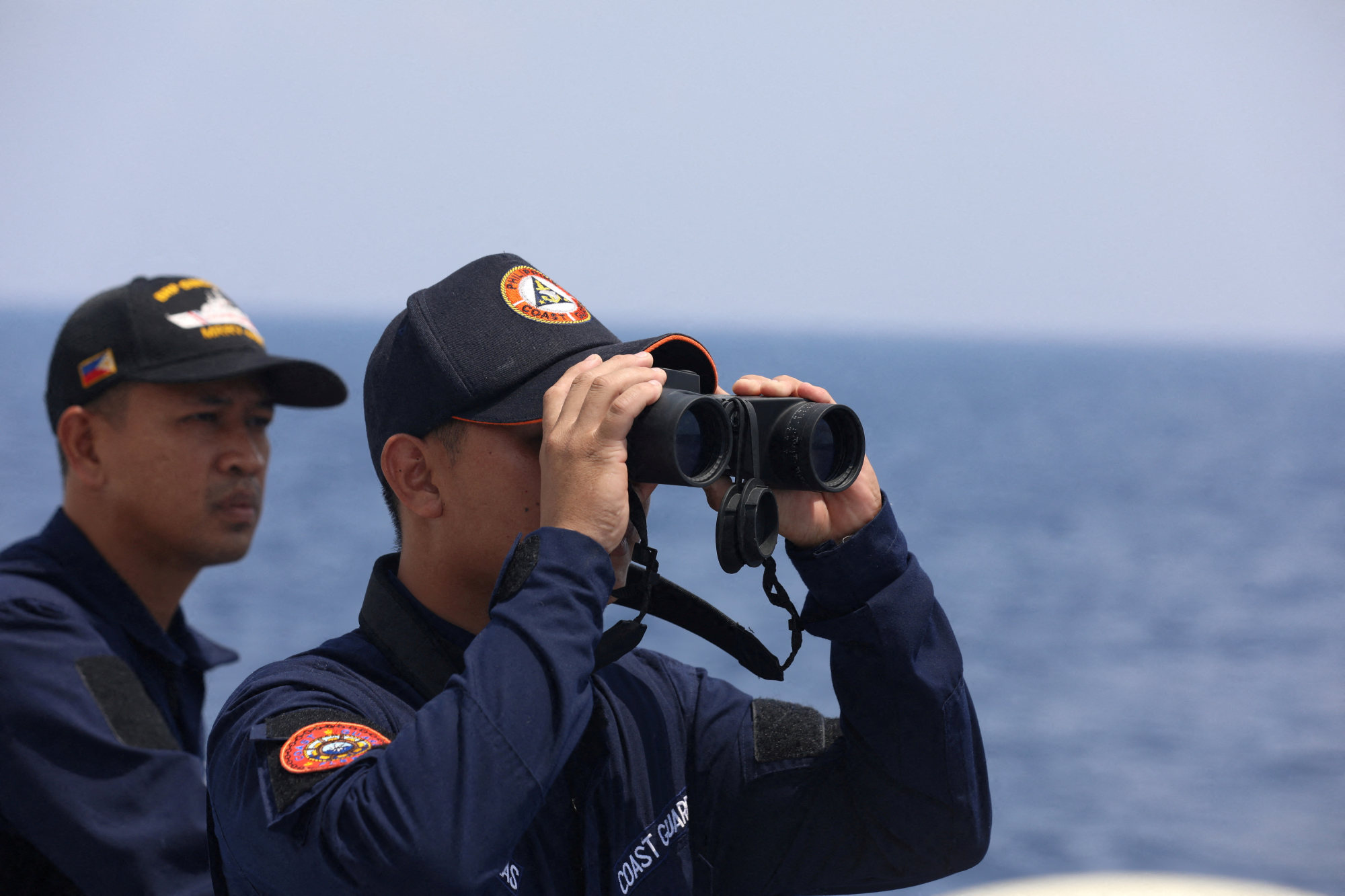
Sea monitoring from space
Against the backdrop of Beijing’s recent activities in the South China Sea, long-time allies the Philippines and United States have agreed to cooperate on the potential use of space technology for maritime domain awareness to keep an eye on vessels within Manila’s territorial waters and EEZ.
In a joint statement released on Monday, the US and the Philippines said they conducted the first Bilateral Space Dialogue, held in Washington on May 2, during which they agreed satellite monitoring was a “priority area for bilateral cooperation”.
The new platform is designed to strengthen cooperation and advance bilateral exchanges in civil space matters, including the use of space for maritime domain awareness and space situational awareness.
The Bilateral Space Dialogue programme will be useful in monitoring and documenting vessels in the Philippines’ territorial waters and EEZ, ensure the safety of mariners at sea, monitor and help protect the environment, and help combat illegal, unreported and unregulated fishing.
When asked about the latest cooperation reached between Washington and Manila, Ona said the message was clear – all the efforts of the Philippines and its allies were meant to present a solid and unified response against Chinese aggression.
“I believe that this is part of the ongoing efforts to defend our telecommunication environment,” Ona said. “This can act as deterrence if we can access these technologies and at the same time protect our telecoms systems. It’s also part of grey zone tactics and interference with telecoms and cybersecurity.”
Custodio said the Bilateral Space Dialogue programme agreement “increases the ability of the Philippines to monitor the vast maritime domain which is its EEZ and to track movements of possible threats to its interests there”.
This would allow the Philippines to boost its situational awareness and properly respond to any developments in the area, he added.
Ray Powell, a maritime expert and security analyst at the Gordian Knot Center for National Security Innovation at Stanford University, said Manila had much to gain by increased space cooperation with the US, particularly in the West Philippine Sea.
“Better access to space technology can help the Philippines improve its maritime domain awareness and communications,” Powell said.
“We don’t know yet how much exposure it will take to actually deter China’s aggression in the West Philippine Sea. So far, Beijing has not been deterred but has in fact escalated, but its escalation has only served to increase the Philippines’ determination and its international support.”

